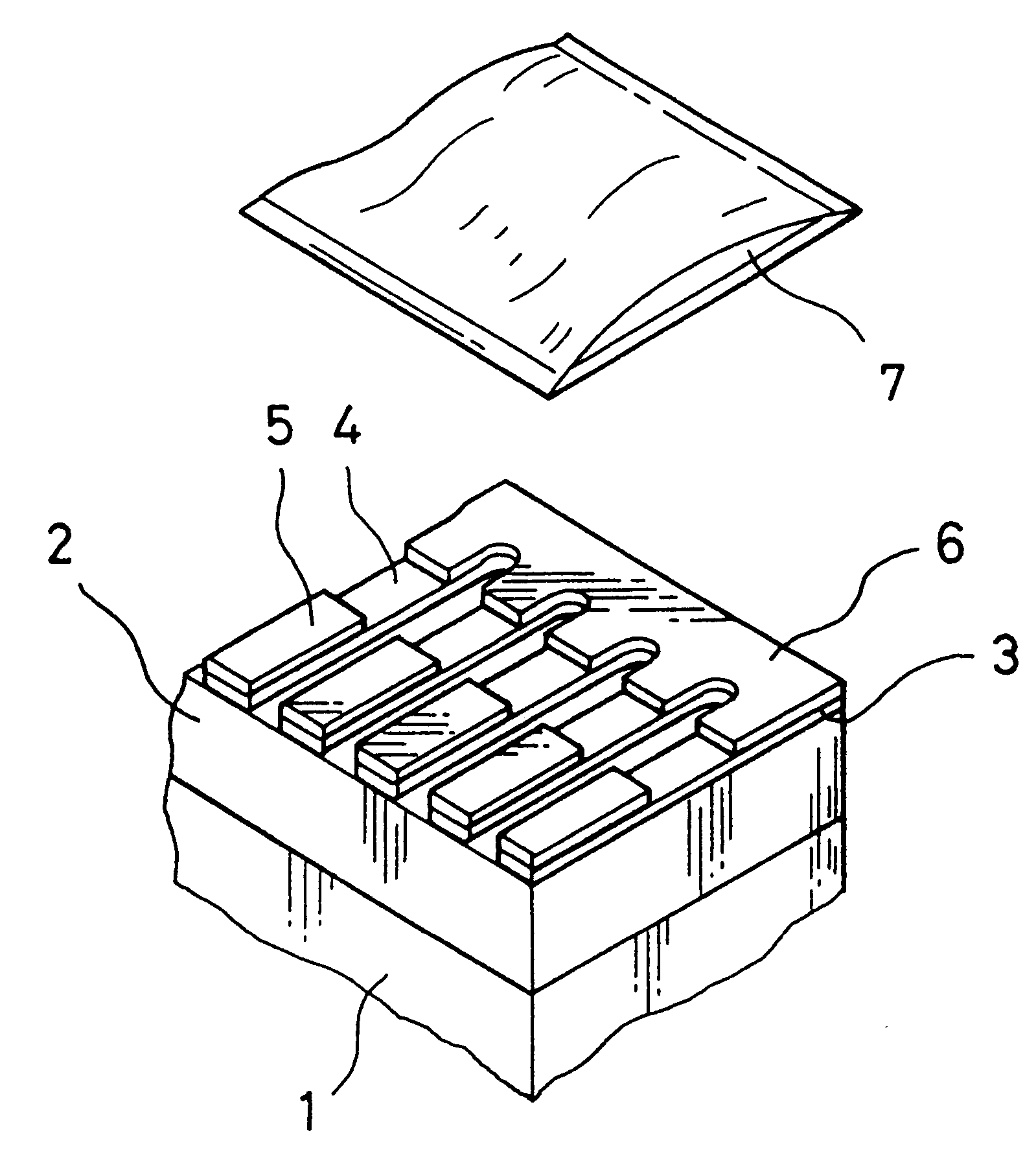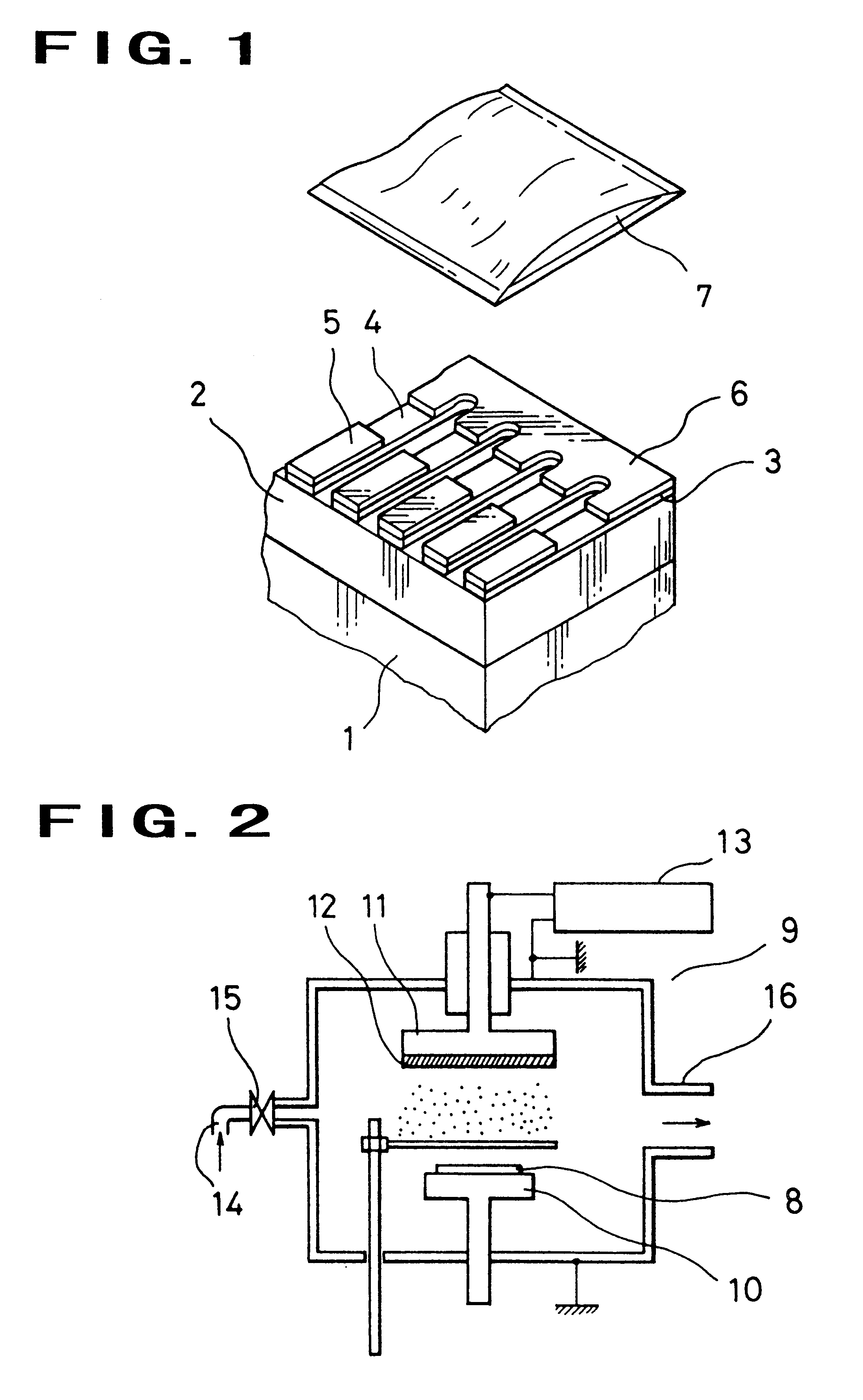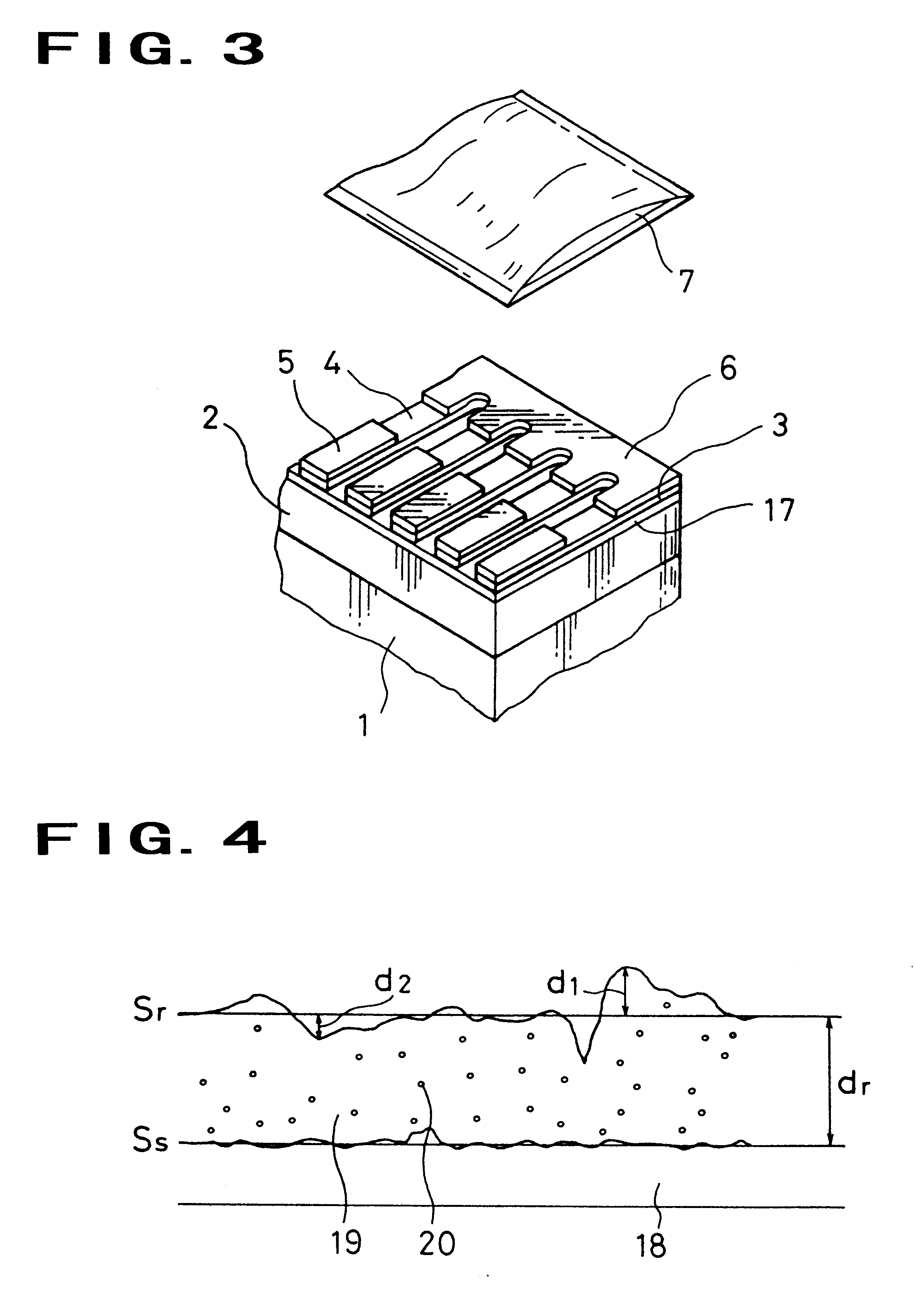Thermal printing head, process for producing thermal printing head, recorder, sinter and target
a printing head and thermal printing technology, applied in the field can solve the problems of impairing the properties of thermal printing heads, corroding electrodes or heat-generating resistors, and hardly removing the heat-generating resistor layer, so as to reduce the dispersion of foreign matter, enhance density, and reduce the effect of pores
- Summary
- Abstract
- Description
- Claims
- Application Information
AI Technical Summary
Benefits of technology
Problems solved by technology
Method used
Image
Examples
example 3
The thermal printing head shown in FIG. 1 was produced. Specifically, a glaze glass layer 2 comprising silicon dioxide was disposed on an alumina-ceramics supporting substrate 1. Then, a heat-generating resistor layer 3 comprising Ta--SiO.sub.2 was formed on the glaze glass layer 2. Separate electrodes 5 and a common electrode 6 formed of Al--Si were formed by a photoengraving process so that a heat-generating part 4 was formed on the heat-generating resistor layer 3. And, a protective layer 7 for covering the heat-generating part 4, the separate electrodes 5 and the common electrode 6 was formed as follows.
First, powder comprising 74.6% by weight of silicon nitride having an average particle diameter of 1 .mu.m, 24.9% by weight of silicon dioxide having an average particle diameter of 1 .mu.m and 0.5% by weight of magnesium oxide having an average particle diameter of 0.05 .mu.m was mixed in respective ball mills to prepare sintering materials. The silicon nitride and the magnesium...
PUM
| Property | Measurement | Unit |
|---|---|---|
| particle diameter | aaaaa | aaaaa |
| particle diameter | aaaaa | aaaaa |
| average particle diameter | aaaaa | aaaaa |
Abstract
Description
Claims
Application Information
 Login to View More
Login to View More - R&D
- Intellectual Property
- Life Sciences
- Materials
- Tech Scout
- Unparalleled Data Quality
- Higher Quality Content
- 60% Fewer Hallucinations
Browse by: Latest US Patents, China's latest patents, Technical Efficacy Thesaurus, Application Domain, Technology Topic, Popular Technical Reports.
© 2025 PatSnap. All rights reserved.Legal|Privacy policy|Modern Slavery Act Transparency Statement|Sitemap|About US| Contact US: help@patsnap.com



